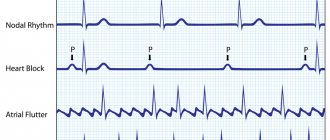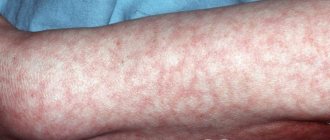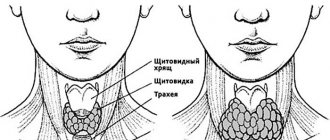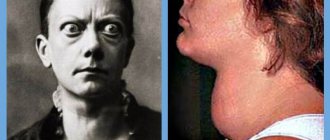Causes of unstable angina Symptoms Diagnosis Treatment of unstable angina Lifestyle with angina Complications and prognosis
To understand what unstable angina is, what causes it and what it can lead to, it is necessary to briefly dwell on the characteristics of the blood supply to the heart.
For the heart muscle to function well, it requires sufficient amounts of glucose and oxygen. These substances are delivered with arterial blood through the coronary (coronary) arteries, originating from the aorta. The right and left arteries are distinguished, the latter is divided into the anterior descending and circumflex branches. During physical or emotional stress, when the heart rate increases, the myocardial need for oxygen increases, which should be accompanied by an adequate increase in coronary blood flow.
If the coronary arteries are spasmed (compressed) or blocked from the inside by a thrombus and/or atherosclerotic plaque, a discrepancy between the blood supply to the myocardium and its oxygen demand develops. Myocardial ischemia occurs - a chain of pathological processes in the heart muscle, characterized by hypoxia (lack of oxygen) of muscle cells, followed by their necrosis (death) and the formation of a scar in this place. Ischemia is clinically manifested by symptoms of angina pectoris, and necrosis is manifested by myocardial infarction.
Angina is a clinical symptom complex that develops with coronary heart disease, characterized by the occurrence of myocardial ischemia during exercise or at rest and is manifested by attacks of pressing, burning pain in the heart area, which disappears when taking nitroglycerin.
Angina is classified into stable and unstable . The stability of angina is determined by the nature of the attacks (duration, intensity, frequency of pain), as well as the effectiveness of nitroglycerin for pain relief. Such a division is important in prognostic terms, since the likelihood of myocardial infarction and its complications is many times higher with unstable angina. The tactics of patient management also depend on this, because doctors, when hospitalizing a patient with unstable angina, are already prepared for the fact that the risk of developing a heart attack is high. Accordingly, intensive therapy will be aimed at preventing further complete occlusion of the coronary arteries, while with a stable form, outpatient monitoring and timely administration of prescribed medications are sufficient.
Stable angina is divided into four functional classes, determined depending on the physical activity that the patient can endure without heart pain.
Unstable angina is a kind of “exacerbation” of coronary artery disease, when, under the influence of certain reasons, there is an increase in the frequency, duration and intensity of attacks of heart pain with lower exercise tolerance than before. The unstable form includes the following types of angina:
- new-onset angina, - Prinzmetal's angina, - post-infarction angina, - progressive angina.
Unstable angina can either lead to the development of myocardial infarction or progress to stable angina, possibly with a higher functional class than the patient had before, that is, with a decrease in exercise tolerance. Often doctors, when talking with a patient, use the expression “pre-infarction state”, characterizing the diagnosis of unstable angina, which is not entirely legitimate, since not in all cases its final outcome will be the development of myocardial infarction.
Description of the disease
The main condition for the development of coronary heart disease is the presence of atherosclerosis, in which cholesterol and other harmful lipids are deposited on the walls of arterial vessels. Almost all blood vessels in the body suffer from atherosclerosis, but it is the coronary arteries located in the heart that are most susceptible to the negative effects of this pathology.
Over time, cholesterol plaques grow, reducing the lumen of blood vessels and preventing normal blood flow.
If a person is calm, circulatory disorders hardly manifest themselves, but during nervous or physical stress, the heart increases its rhythm , and blood begins to flow faster through the vessels.
Since the vessels are narrowed, the movement of blood becomes more difficult, causing the myocardium to lack oxygen. Hypoxic processes prevent the excretion of unprocessed metabolic products, and this leads to pain in the heart . This condition is called an angina attack.
A stable type of disease can be successfully controlled - do not overexert yourself physically, avoid stress, and take nitroglycerin during an attack. The unstable form of the disease manifests itself differently.
This pathology occurs when there is a sudden destabilization of the coronary circulation - the vessels narrow greatly for a short time, which causes an attack.
Unstable angina can be considered a borderline state between a normal heart failure and such a threatening phenomenon as myocardial infarction. This pathology, without timely medical care, can lead to the development of an acute heart attack, and therefore requires urgent hospitalization and constant medical supervision.
Find out everything about the causes of varicose veins in the legs and their elimination - we will tell you the most important details about this common disease.
What is coronary artery disease of the heart - symptoms and treatment, classification and diagnosis. All the most necessary knowledge is waiting for you in our article!
What medications are used for coronary heart disease? Find out here.
Getting to know the disease
Are you suffering from chest pain?
You urgently need to see a cardiologist. After all, you are developing a dangerous disease!
To explain and understand what unstable angina is, you should have some knowledge about the heart and its functions. Substances such as glucose and oxygen are necessary for the heart to function normally. Substances fall into the heart through the arteries.
With increasing physical or emotional stress, the myocardium (the most popular middle muscle layer) requires more oxygen - coronary blood flow increases. If the arteries cannot deliver the required amount of substances to the heart, myocardial ischemia will occur.
This leads to necrosis (cell death) and scarring in the area.
There are two types of angina : stable and unstable. Unstable angina is distinguished by its unpredictability in the occurrence of attacks (pain in this disease has the appearance of attacks), their duration and the effectiveness of nitroglycerin in attacks.
The possibility of myocardial infarction increases with this disease.
Unstable angina is an exacerbation of coronary artery disease (stable angina), when for various reasons the duration increases and the frequency of attacks increases.
Angina pectoris is a companion to IHD (coronary heart disease), manifested by myocardial ischemia, severe spasms in the chest, which may be followed by sudden death. Due to the disease, myocardial infarction may develop or angina may become stable.
Angina pectoris excludes any stress (physical and psychological). That is why a good doctor will not only prescribe a bunch of pills, but also advise you to slow down the pace of life and change jobs.
Experts call unstable angina a pre-infarction condition, due to the high likelihood of a heart attack. Sometimes the disease becomes stable or progresses to angina. In the international classification of diseases ICD-10, a disease has its own personal code.
Doctors can often include it in a referral or diagnosis. The code for unstable angina is 120.0. Unstable (progressive angina that appears for the first time) belongs to the first class in the standard classification.
Causes and risk factors
Angina pectoris takes on an unstable form when a fibrous plaque ruptures , followed by the formation of a blood clot that prevents normal blood supply to the myocardium.
Fibrous plaque can be destroyed due to inflammatory processes, excess fat deposits, hemodynamic disorders or lack of collagen.
The main cause of unstable angina is ischemic heart disease . It appears when fatty deposits accumulate on the walls of the arteries. In this case, the lumen of the vessels narrows, the heart ceases to receive enough oxygen, which leads to the painful symptoms of ischemia.
Other reasons that can cause the development of pathology are:
- rupture of capillaries with subsequent hemorrhage into the plaque;
- increased platelet aggregation ability;
- the release of serotonin or another vasoactive agent into the blood, which causes a sharp narrowing of the lumen of the coronary vessels;
- decrease in antithrombotic properties of endothelial cells.
There are also a number of factors that can trigger the formation of this pathology: high cholesterol, diabetes, hypertension, genetic predisposition, excess weight, smoking, sedentary lifestyle.
Treatment
Non-drug treatment:
- emergency hospitalization;
- sharp limitation of physical activity - strict bed rest.
Drug therapy
Relief (cessation) of pain syndrome:
- nitrates (a group of drugs that relieve a painful heart attack, but do not affect the pulse and blood pressure);
- neuroleptanalgesia (a method of intravenous general anesthesia in which the patient is conscious but does not experience emotions).
Medicines to reduce myocardial oxygen demand - beta blockers (dilate blood vessels, slow the heartbeat, relieve pain in the heart): calcium antagonists (inhibit the penetration of calcium into the muscle cells of the heart and blood vessels, dilate blood vessels, change the heart rate).
Blood thinners:
- antiplatelet agents (drugs that reduce the ability of platelets (blood cells responsible for blood clotting) to stick together);
- direct anticoagulants (drugs that inhibit the activity of the blood coagulation system and prevent the formation of blood clots).
Surgery
Surgical treatment is indicated for patients with complex and rapidly progressing forms of unstable angina, resistant to conservative treatment, in which the risk of developing severe and life-threatening complications significantly increases. Among the methods of surgical correction of a pathological condition, the most commonly used are:
- coronary artery bypass grafting or surgical restoration of normal blood supply to the area of myocardial ischemia by creating a bypass arterial bed;
- coronary angioplasty with stenting, when a special stent is inserted into a narrowed vessel, which expands its lumen and resumes coronary blood flow.
Rehabilitation:
- Patients who have suffered angina pectoris and have undergone treatment in a hospital are sent for rehabilitation to a sanatorium. Continuing to take the prescribed medications is mandatory. It is also important to continue to lead a healthy lifestyle with moderate physical activity. Be sure to regularly spend time in the fresh air and get adequate sleep and rest.
- A special diet and proper nutrition must be followed. It is recommended to steam, boil or bake food. Vegetables and fruits, juices and jelly, cereals and dairy products are encouraged. Fatty meats and animal fats should be limited. Alcohol, spicy, fatty, smoked and salty foods are necessarily excluded. Salt intake is limited to a minimum.
- To prevent recurrent attacks and maintain normal life activities, lifelong use of certain medications prescribed by a cardiologist is extremely important. Restoration of working capacity is possible after 2 weeks from the onset of the disease.
Classification of species
There are 4 main types of unstable angina:
- Primary , in which the disease causes concern for a month.
- Post-infarction , manifested by attacks in the first 2 days after myocardial infarction, or during the acute period, which usually lasts about eight weeks.
- Progressive , in which health worsens and the frequency of attacks increases progressively over the course of a month.
- Prinzmetal's angina, in which blood vessels narrow as a result of spasms, and not due to atherosclerosis.
It is also divided according to duration and severity:
- 1st degree . The disease began less than 2 months ago, is severe, progresses quickly, and manifests itself at rest.
- 2nd degree . Refers to the subacute phase of the disease, in which symptoms appear for the first time, and pain can last more than two days.
- 3rd degree . Pain has been occurring for the last 2 days.
Depending on the factors of appearance and clinical picture, it is divided into three classes:
- 1 class . Pain syndrome first appears with high load, then with minimal load. The number of attacks increases over time. The first attack was no earlier than 2 months ago. In a calm state, attacks may not appear for 2 months.
- 2nd grade . Characterized by constant pain in a calm state. The first case of an attack was registered no earlier than 2 months ago.
- 3rd grade . This includes acute angina at rest, which has occurred over the past two days.
Based on the reasons for its formation, the disease is classified into three groups:
- Group A - attacks occur due to diseases that are not related to the heart - thyrotoxicosis, hypoxia, anemia, acute infection.
- Group B – angina develops against the background of other heart problems.
- Group C – the origin of the disease is associated with a heart attack.
The diagnosis of unstable angina is made precisely on the basis of its classification and looks something like this: “unstable angina, class 1 A.” Based on this characteristic, it can be determined that attacks have been occurring with light exertion for 2 months, and the patient has a disease that causes narrowing of the coronary vessels.
What is the most effective medicine for angina pectoris? We will tell you about all the drugs prescribed by doctors.
Find out everything about the etiology of myocardial infarction, as well as its first symptoms, emergency care and consequences.
What are the clinical variants of myocardial infarction and what are their differences? You can read about everything in the following review.
Manifestations
Unstable angina has pronounced symptoms. The patient suffers from:
- painful sensations of a squeezing and pressing nature;
- heaviness and lack of air;
- discomfort in the chest and atrial region;
- pain spreading to the left arm, shoulder, neck, jaw;
- prolonged pain (about ten minutes).
The attack is not associated with heavy work, weather conditions or food intake. It can start even with minimal physical activity.
If you take a Nitroglycerin tablet, and after a while another one, your health will improve.
The frequency of attacks increases. Heart rhythm disturbances gradually develop. The patient feels a beating heart, interruptions in the functioning of the organ, and irregular contractions.
With little physical activity, a person suffers from lack of air.
Danger and complications
If left untreated, unstable angina can cause the following problems :
- acute myocardial infarction;
- pulmonary embolism;
- sudden fibrillation of the ventricles of the heart with subsequent death;
- acute heart failure accompanied by pulmonary edema.
If the frequency of pain attacks increases and previously unusual symptoms occur, you should consult a doctor as soon as possible. If the patient has been prescribed a referral for treatment in a hospital, if refused, he fully assumes responsibility for his life.
Treatment: how to get rid of unstable angina?
Most often, treatment is aimed at stabilizing unstable angina. The attacks may not disappear completely, but they may become much less frequent.
If you consult a doctor at an early stage of the disease, you have a chance to completely get rid of attacks of chest discomfort. This is also possible after surgical treatment.
Treatment of unstable angina is aimed both at eliminating symptoms immediately when they appear, and at getting rid of the underlying disease that triggered the onset of angina.
Elimination of attack symptoms
To eliminate pain during the onset of symptoms, narcotic analgesics may be needed, since nitrate-based drugs stop working.
In the early stages of the disease, nitrates are usually sufficient, but in larger dosages than in stable angina.
Sometimes it is necessary to administer a nitroglycerin solution in the form of a dropper during the day.
Drugs for the treatment of unstable angina
| Pharmaceutical group | Effect | Examples |
| Anticoagulants, antiplatelet agents | Thin the blood, reduce the stickiness of platelets, prevent the formation of blood clots | Fraxiparin, Dalteparin, Aspirin |
| Calcium antagonists | Dilate coronary vessels. They are used for their spasm and arterial hypertension. Effective in the treatment of variant unstable angina | Diltiazem, Verapamil, Cinnarizine |
| Metabolics | Improves metabolism in the heart muscle | Preductal, Corvaton |
| Statins | They lower blood cholesterol levels and reduce the risk of new or increasing existing plaques. They are used to treat atherosclerosis | Lovastatin, Rosuvastatin |
Types of surgical treatment of unstable angina
Surgery is often required. It is necessary if conservative treatment is ineffective (symptoms do not decrease within 72 hours from the start of therapy). Before the operation is scheduled, angiography of the coronary vessels is performed.
| Operation | Indications, effectiveness and risks |
| Coronary artery bypass surgery | Narrowing of the lumen of the left coronary artery trunk by more than 50%; damage by pathological processes to two or three main coronary vessels, accompanied by left ventricular dysfunction. The effectiveness of this operation is very high - in 63% of patients, the unstable form of angina disappears completely. However, there is also a risk of a heart attack due to surgery (develops in 7% of patients). However, if unstable angina is left untreated, a heart attack has a probability close to 100%. The mortality rate of the operation is 1%. |
| Coronary angioplasty, stenting of coronary vessels | Vessel stenosis with narrowing of more than 50%. Efficacy: complete disappearance of symptoms in 60% of patients. The incidence of infarction during surgery is 6% of patients. Mortality – 1%. If angioplasty fails, coronary bypass surgery is necessary. |
After surgery, even if the signs of the disease have disappeared, treatment with medications will continue to prevent re-occlusion of the blood vessels.
Clinic: signs and symptoms
Identifying the disease is sometimes quite difficult, since the symptoms of this disease can be attributed to many other heart pathologies.
Unstable angina is determined if the following signs are observed:
- Changes in symptoms: the frequency and duration of painful attacks has increased, nitroglycerin helps less, the pain intensifies and spreads to nearby parts of the body, attacks occur with less stress than before.
- An attack of pain that lasts more than 10 minutes and is not relieved by nitroglycerin.
- The attacks began to bother me a month ago or later.
- Pain in the chest during treatment of a post-infarction condition - this sign indicates the formation of a new blood clot in the affected vessel.
- The attacks began to occur at rest.
- The appearance of symptoms after coronary artery bypass surgery performed less than three months ago.
Prinzmetal's angina has its own specific symptoms:
- Most often, young men are susceptible to attacks;
- pain is not associated with physical activity;
- attacks occur more often in the morning than at other times of the day;
- high effectiveness of treatment with calcium antagonists and drugs from the nitrate group.
Prinzmetal's angina has an extremely unfavorable prognosis. This form of the disease in many cases leads to the rapid development of myocardial infarction.
Since this pathology poses a great danger to human life, when the first symptoms appear, you should immediately contact a cardiologist . People suffering from coronary heart disease and angina pectoris need to be regularly observed by a doctor and undergo examinations.
Symptoms of the disease
It is difficult to predict the appearance of symptoms of the disease, because symptoms of unstable angina can appear at any moment. The difference from exertional angina is that signs of unstable angina appear unexpectedly, and their number increases over time.
Symptoms of the disease are:
- pain (sometimes the pain radiates to the jaw, wrist);
- compression of the chest (heart);
- shortness of breath;
- general ailments;
- feeling of lack of air;
- nausea.
Often, pain is a sign of the disease. The attacks are accompanied by a feeling of fear. The patient breaks out in a cold sweat and turns pale. During laboratory testing, clear evidence of the presence of the disease will be the registration of an increase in tropinin levels.
With the consent of the patient, medical specialists can perform coronary angiography in order to make an accurate diagnosis.
However, it is only possible to accurately determine the disease, even after the presence of the above symptoms and an attack, using special equipment. It is necessary to do an ECG and obtain a cardiogram of the heart. It is worth considering that unstable angina has an unfavorable prognosis for the development of myocardial infarction.
It is difficult to detect, even using special equipment.
Unstable angina shows symptoms after exercise, eating and emotional outbursts.
Diagnostics
To make a diagnosis, the following types of diagnostic procedures are used:
- general examination of the patient , listening to heart sounds, studying symptoms and medical history;
- blood test to identify inflammatory processes;
- urinalysis – necessary to exclude other pathologies;
- ECG – to identify complications of coronary artery disease;
- Holter ECG - used to determine the conditions, frequency and duration of presence;
- Echo-ECG - required to study the structure and size of the heart, as well as the condition of the valves and blood circulation;
- coronary angiography , which examines blood flow in the heart vessels;
- Stress echo-ECG – carried out to identify areas of myocardial hypoxia under conditions of physical activity;
- scintigraphy , which allows you to study the condition of the walls and cavities of the heart.
Only after collecting complete data from all examinations can an appropriate diagnosis be made.
Find out what a general blood test shows and how to take it correctly, rules for interpreting the results and much more.
What does it mean if the ESR in the blood is higher than normal? How does this indicator influence the diagnosis? Find out all the details here.
What types of tonometers are there for measuring blood pressure at home? You can read about them in this article.
Establishing diagnosis
Unstable progressive angina is determined using laboratory and instrumental examination methods. The doctor asks when exactly the symptoms began, how often they occur, and when relief occurs.
To determine the presence of risk factors, they ask about diet, lifestyle, and working conditions. Find out whether any of your immediate relatives have cardiovascular pathologies.
During the medical examination, they listen to heart murmurs and palpate the chest to identify hypertrophic changes in the organ.
To make a diagnosis, it is recommended to:
- General blood test. With its help, the presence of inflammatory processes in the body is detected, which is manifested by an increase in leukocytes and erythrocyte sedimentation rate.
- General urine analysis to detect concomitant pathologies.
- Biochemical blood test. During the procedure, they check how much cholesterol, fractions, and sugar are in the blood. This allows you to assess the risk associated with atherosclerosis.
- Analysis for specific enzymes in the blood. It allows you to confirm or exclude a heart attack. If heart cells are destroyed, protein enzymes contained inside the cells enter the blood.
- Electrocardiography. The electrical activity of the heart is recorded.
- Echocardiography. This is an ultrasound examination of the heart, during which the structure and size of the organ is assessed during operation, the condition of the intracardiac ducts and valves is studied, violations of contractility are identified, and specific manifestations of ischemia are determined. But even if the results of the procedure are normal, the possibility of angina pectoris exists. Therefore, other examinations are also necessary.
- Daily Holter monitoring. To do this, an electrocardiogram is recorded throughout the day. During the procedure, ischemic disorders, the reasons for their development, and the presence of an abnormal rhythm can be identified. During the study, a Holter monitor is used, which is fixed to the shoulder or belt. He takes testimony. The patient keeps a diary in which he notes all his actions and changes in his condition.
- Stress echocardiography. During this technique, physical activity is combined with echocardiography. It allows you to check the contractility of the myocardial muscles during tension. During the examination, ultrasound results are compared in a calm state, during exercise and rest. In the acute period, this procedure cannot be performed, as it can provoke a heart attack.
- Scintigraphy. A radioactive drug is injected into the body and, thanks to the radiation it emits, an image of the cavities and walls of the heart is seen.
- Coronary angiography. This is a X-ray contrast examination technique, during which the condition of the coronary vessels is assessed. The procedure is performed when there are indications for surgical treatment of unstable angina or when the course of the disease is unfavorable. It is used to determine the presence of blood clots and narrowing of the lumen of the arteries.
Also read: Severe symptoms of Prinzmetal's angina
You may need to consult with highly specialized specialists.
Therapy tactics
If unstable angina is detected, emergency hospitalization with strict bed rest, as well as drug therapy, are prescribed. The following drugs are used in treatment:
- painkillers – neuroleptanalgesia, nitroglycerin;
- drugs that improve blood flow - disaggregants and direct anticoagulants (clopidogrel, prasugrel, aspirin and others);
- drugs that reduce myocardial oxygen demand - calcium antagonists, beta blockers.
In the absence of a positive effect from drug therapy, surgical treatment of the disease may be indicated:
- Angioplasty . A stent (metal tube) is inserted into the narrowed vessel, which keeps the vessel walls from sticking together and ensures normal blood flow.
- Coronary artery bypass grafting . This operation is used if the main coronary artery or most of the coronary vessels have been affected. In this case, an additional channel is created to bypass the affected vessels, which ensures the delivery of blood to the heart.
After treatment and improvement of the patient’s condition, sanatorium cardiac rehabilitation is usually prescribed, which is necessary for the complete stabilization of coronary blood flow.
It is also important to know about the first signs of an angina attack and how to stop it - more on this in a separate article. Sometimes treating angina with folk remedies can help.
Treatment of the disease
Unstable angina requires immediate treatment, with the intervention of professional doctors.
Treatment must be carried out on an inpatient basis. Patients are subject to immediate hospitalization. Along with treatment, constant observation and monitoring of the patient’s condition should be carried out.
The goal of treatment of unstable angina is to prevent painful attacks and eradicate complications. During treatment, the patient must remain in bed and follow a diet (meals should not be heavy or stressful for the body, eat in small portions, but often).
In severe cases, scanning surgery (piercing the blood vessel and inflating, clearing clogged vessels) of the coronary arteries or transplantation of healthy organs may be necessary.
Now technologies have emerged that make it possible to find out the condition of the arteries without introducing anything inside. This screening method has become standard in some countries around the world. It is mandatory for all citizens over 50 years of age to pass annually.
Treatment begins with taking aspirin (has a vasoconstrictor property) in order to remove blood clots and prevent blockage of the coronary vessels. The proven benefits of aspirin cannot be fully used: it irritates the walls of the stomach. If there is pain in the chest, the patient is given nitroglycerin.
Beta blockers play an important role in treatment (they help slow the heart rate and lower blood pressure). They are prescribed to eliminate coronary myocardial disease and reduce vascular damage. In combination with aspirin and other medications, beta blockers guarantee a reliable effect.
Nitrates are initially administered intravenously continuously, then discontinued. With self-treatment, the disease progresses. Because of this, angina pectoris or a chronic disease develops. But do not despair, because even progressive angina is curable.
Forecasts and preventive measures
The prognosis of the disease depends on its severity, duration of development and associated pathologies. To prevent angina attacks, it is recommended to follow preventive measures:
- to give up smoking;
- fight against excess weight;
- playing sports;
- moderate drinking;
- plenty of fruits, fish, vegetables, whole grains and lean meats in the diet.
In addition, diseases that cause high blood pressure and narrowing of arterial vessels should be promptly treated . Taking an aspirin tablet daily can reduce the number of painful attacks and reduce the likelihood of developing an acute myocardial infarction.
Prevention of attacks of unstable angina
To reduce the likelihood of repeated attacks of angina and avoid surgery, the patient must adhere to a special regimen. The cardiologist gives detailed recommendations:
- First of all, you need to give up bad habits - smoking, addiction to alcohol, drugs. Their detrimental effect on cardiac activity is obvious and does not need proof.
- It is equally important to carefully plan your diet. You'll have to give up some culinary habits.
Diet
“Prohibited” foods include all foods with high cholesterol content, excess salt and spices, baked goods and sweets:
- butter;
- salo;
- fat meat;
- sausages;
- smoked meats
Fried foods are also prohibited. The same applies to carbonated drinks. Taking into account all these points, visiting fast foods becomes highly undesirable.
What kind of food will you love? Authorized products include:
- all porridges, except semolina;
- lean meat and fish;
- dairy products;
- almost all vegetables and fruits.
The dishes chosen are those that are prepared by boiling or steaming. The body's need for fats is satisfied with the help of vegetable oils - sunflower, olive and others.
Moderate loads
Since attacks of unstable angina are provoked by high stress on the body, it is better to avoid them in every possible way. Physically hard work is not for heart patients. Working overtime also becomes unacceptable - especially when it forces you to sacrifice sleep. The cost of stress is now also rising.
Experts advise: if your job requires significant effort, you should find another one, or even retire. The pursuit of big earnings is not worth the expenses that will have to be incurred when treating angina pectoris - especially when it comes to operations on the heart and blood vessels. Moreover, sometimes attacks end in death.
You will also have to say goodbye to sports. Strength exercises, weight lifting, and bodybuilding become inappropriate after an attack of unstable angina. On the other hand, complete exclusion of physical activity and a sedentary lifestyle are also undesirable. Physical therapy and walking are useful, and if you haven’t moved enough so far, then it makes sense to get more active.
How to prevent and prognosis
A favorable treatment outcome depends on the severity of the pathology and the development of concomitant diseases. The patient must follow the recommendations of the attending physician, especially monitor their health during the acute phase, which can last 4-6 weeks. For preventive purposes, you need to lead a moderately active lifestyle, get rid of bad habits and carry out timely treatment of pathologies of the cardiovascular system. Regular use of the drug “Aspirin” will also help and reduce the risk of acute heart attack.
Diagnostic highlights
Modern diagnosis of unstable angina should be staged and comprehensive, which will create a complete picture of the disease, determine the causes of its development and confirm the presence of complications. The primary stage of diagnosing the disease includes:
- collection of anamnestic data and patient complaints;
- analysis of life history with identification of concomitant pathologies, harmful factors affecting the body, previously suffered ailments, etc.;
- assessment of the role of genetic predisposition in the development of the disease.
Next, the doctor begins an objective examination of the patient, highlighting the main symptoms of the disease. To do this, the cardiologist uses methods of palpation of the heart area, its percussion and auscultation, which gives him the opportunity to assess the boundaries of the cardiac muscle, the presence of a heartbeat, listen to pathological noises and disturbances in the rhythm of cardiac activity.
Laboratory and instrumental diagnosis of unstable angina is a set of studies that make it possible to detect pathological changes in the heart, assess the degree of their development and the presence of concomitant diseases:
- general and biochemical blood test, which allows you to detect signs of an inflammatory process, assess cholesterol, sugar levels and much more;
- analysis of the assessment of the level of activity of cardiac-specific enzymes, which makes it possible to exclude the development of acute myocardial infarction;
- An ECG for unstable angina makes it possible to detect the presence of zones of ischemia of the heart muscle (decrease or rise above the ST segment isoline, high T waves in the chest leads, heart rhythm disturbances);
- echocardiography (ultrasound examination of the heart) to assess the condition of the structures and sizes of the heart chambers;
- Holter 24-hour ECG monitoring (24-hour cardiogram) – recording an electrocardiogram for 1-3 days to study cardiac ischemia, the causes of its occurrence, the duration of attacks, the presence of disturbances in rhythmic activity;
- myocardial scintigraphy is a method for determining the condition of the walls of the heart and its cavities, which is implemented by introducing a specific contrast into the body and obtaining an image as a result of recording radioactive radiation from isotopes in the images;
- angiography of coronary vessels, which makes it possible to study the causes of myocardial ischemia, confirm the presence of occlusion of a particular area, etc.;
- assessment of the results of a therapeutic examination.
Causes
In many patients, the pathology develops against the background of atherosclerosis, when lipids settle on the walls in the form of plaques. An attack of angina occurs under the influence of the following risk factors:
- exercise stress;
- stress;
- binge eating;
- unstable atmospheric pressure;
- obesity;
- diabetes;
- hypertension;
- alcoholism;
- smoking.
Provoking factors
In addition to the main reasons for the development of unstable angina attacks, experts identify some additional factors that can increase the risk of severe exertional angina. Among them:
- Diseases not related to the heart (diabetes mellitus, pathological changes in the thyroid gland, iron deficiency anemia).
- Pathologies of a cardiac nature (heart defects, hypertrophic cardiomyopathy, condition after a heart attack, chronic myocardial failure).
- The harmful effects of ethyl and tobacco tar.
- Progressive hypertension.
- Strong mental stress, stressful situations, strong emotionality.
- Increased vascular susceptibility to the effects of vasoactive substances, such as serotonin.
- Increased cholesterol levels in the blood.
- Morphan's disease.
- Unfavorable heredity.
- Obesity.
- Insufficient rest, disturbances in night sleep.
- Physical inactivity.
- Excessive physical activity.
Main types of disease
The classification of angina pectoris involves dividing the disease into distinctive types, characterized by different timing of occurrence and degrees of dependence on the levels of stress that cause the attack. There are different forms:
- Stable – lasting more than one month, accompanied by attacks that cause efforts of approximately the same level;
- Unstable – characterized by rapid development with worsening frequency, duration and severity of manifestations under the same loads;
- First-time occurrence - in which no more than one month has passed since the first manifestation of pain.
The first is characterized by a constant course over several years. The second one has a high risk of critical conditions. The third is that it regresses over time or enters a stable stage.
The Cardiovascular Society of Canada has developed a classification of angina into functional classes. The division is based on different load tolerances. The following functional classes (FC) are distinguished:
- I – with good tolerance and development of pain with an unusually high degree of stress associated with heavy physical labor, prolonged running or climbing stairs;
- II – with average tolerance of habitual loads associated with walking short distances, stairs over one floor or changes in weather conditions;
- III - with a significant decrease in load tolerance even when performing small efforts to move up to five hundred meters or less than one floor up the stairs;
- IV – when pain occurs, both with the slightest effort and at rest.
For information: FCs I to III characterize stable, IV – unstable forms of the disease, which is important in predicting the course and selecting its treatment.
Diagnostic methods
The presence of IHD in a person indicates the need to carefully monitor one’s health and promptly respond to attacks that occur. To begin adequate and timely treatment of unstable angina, you should seek help from specialists and undergo a comprehensive diagnosis. When characteristic symptoms appear, the doctor collects an anamnesis, finds out the causes and circumstances of pain attacks and other signs. Basically, NSS is checked using an ECG. An electrocardiogram can provide information about the current state of the heart muscle and the behavior of the myocardium.
If treatment takes place in a hospital, doctors use the Holter monitoring method. To do this, a special device is connected to the patient, which reads the data on the ECG during the day, after which the changes in the cardiogram are assessed. To clarify treatment tactics, the results of laboratory tests are attached to the cardiogram. To do this, you should donate blood samples for general and biochemical analysis. Ultrasound examination is needed to view myocardial contractions and diagnose decreased cardiac output.
To check the state of patency of the coronary vessels, an angiogram method is used by introducing a special contract composition. A diagnostic set of measures, which includes electrocardiographic, ultrasound and laboratory research methods, is necessary to confirm the diagnosis of unstable angina of the heart and select the optimal treatment tactics.
Treatment of unstable angina at home
Outpatient treatment is provided to patients who do not experience severe and prolonged attacks of angina within 2 weeks after stabilization of their condition. An ECG without pathological changes and stable hemodynamics are the basis for outpatient monitoring of the patient.
Patients with unstable angina and moderate risk require medical supervision, including ECG monitoring, serial recording of echocardiography and determination of levels of cardiac markers of myocardial damage and physical or psycho-emotional stress.
You should ask your doctor about recommendations regarding nutrition and lifestyle in general. Take prescribed medications in strict accordance with the prescribed regimen.
How is the diagnosis made?
As with any form of acute coronary syndrome, correct interpretation of symptoms is critical when diagnosing unstable angina. In particular, if a patient has one or more of the following three signs, then their presence is a strong argument for the doctor in favor of diagnosing some form of ACS:
- pain appeared at rest, especially if it lasted more than 20 minutes;
- a first-time attack that significantly complicates the patient’s physical activity;
- Episodes of stable angina become more frequent, last longer, and also occur with the lowest level of stress (physical or emotional).
Once the doctor suspects acute coronary syndrome, he prescribes an electrocardiogram and a specific blood test (markers of damage to the heart muscle) to confirm the diagnosis.
- Unstable angina pectoris ECG signs - “ST segment” is normal. There is no change in serological markers.
- If there is no ST-segment elevation on the electrocardiogram (indicating that the artery is completely blocked), but serological markers are elevated (indicating damage to the heart tissue), then this is a so-called non-ST-segment elevation myocardial infarction.
- If there is an increase in serological markers and ST segment elevation, then we speak of a “major” myocardial infarction (that is, myocardial infarction with ST segment elevation).
Myocardial infarction without ST-segment elevation and unstable angina, the symptoms and treatment of which are practically no different, are harbingers of a “large” heart attack. They indicate that a fragment of an atherosclerotic plaque has been torn off, which partially blocked the lumen of the artery. At least a small blood flow is preserved, which is absent in the latter, when myocardial necrosis occurs. If you start treatment in a timely manner, you can avoid this.
Variants of acute coronary syndrome
Classes for dividing stable forms of the disease
In medical practice, different methods of classifying this type are accepted, but most often, depending on the degree of load and clinical manifestations of stable angina, its classification involves dividing it into the following types:
- I – mild – with infrequent attacks during unusual efforts, subsiding with the release of tension;
- II – the onset of signs of the disease when walking quickly over short distances or climbing one floor on the stairs;
- III – the occurrence of pain, relieved by nitroglycerin, due to slow walking over short distances or climbing stairs to one floor;
- IV – characterized by attacks at rest, or caused by the slightest effort.
Reasons for the development of the disease
In most clinical cases, unstable angina is the result of atherosclerotic damage to the intima of the vessels supplying the heart muscle (coronary arteries). Atherosclerotic plaques, partially blocking and narrowing the lumen of the blood vessels of the heart, cause insufficient blood supply to cardiomyocytes, which during physical activity is manifested by their acute oxygen starvation and in practice is realized by the occurrence of pain in the area behind the sternum.
Signs of the disease may also appear as a result of the formation of a thrombus in the coronary vessels, which does not cause complete obstruction of the lumen, or swelling of an atherosclerotic formation. The clinical picture characteristic of unstable angina can be provoked by the detachment of cholesterol deposits from the wall, caused by high blood pressure, the huge size of the atherosclerotic plaque or inflammation of the inner lining of the coronary vessel.
Oxygen starvation of the myocardium can occur against the background of a decrease in arterial blood pressure, when blood in insufficient quantities reaches the cardiomyocytes, disrupting their trophism and normal metabolism.











